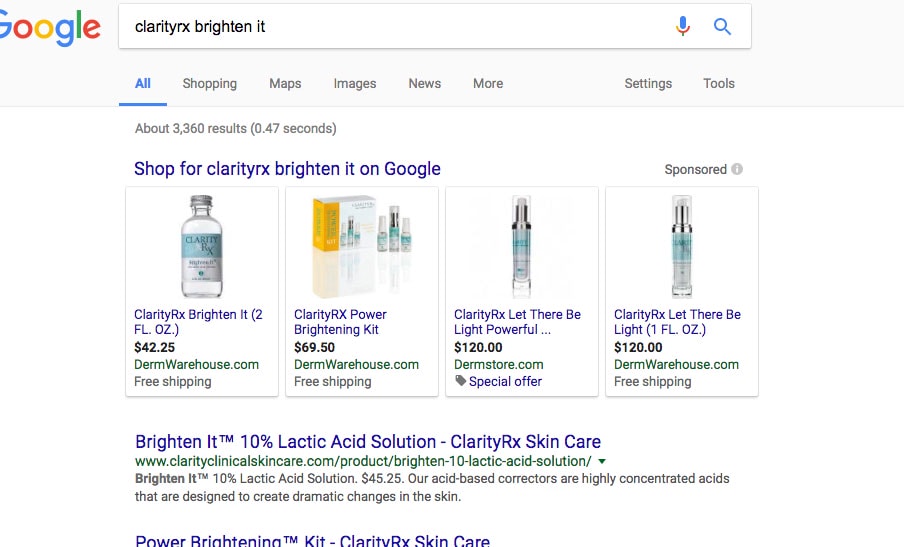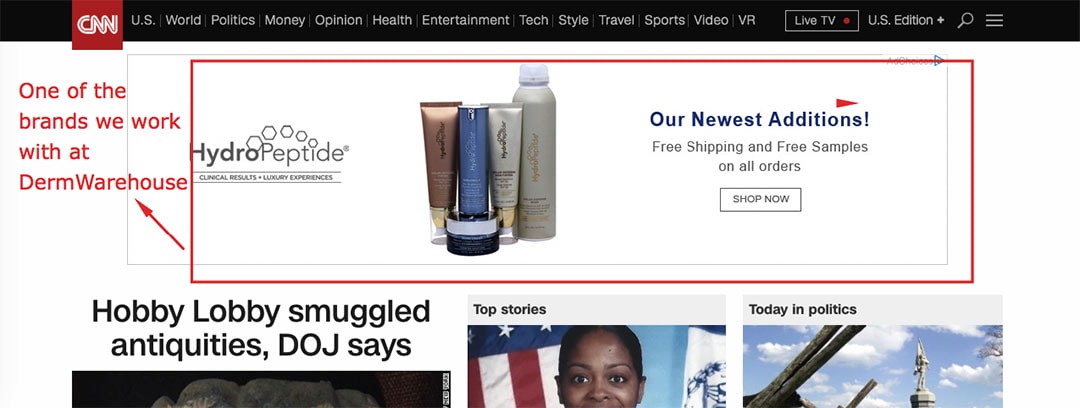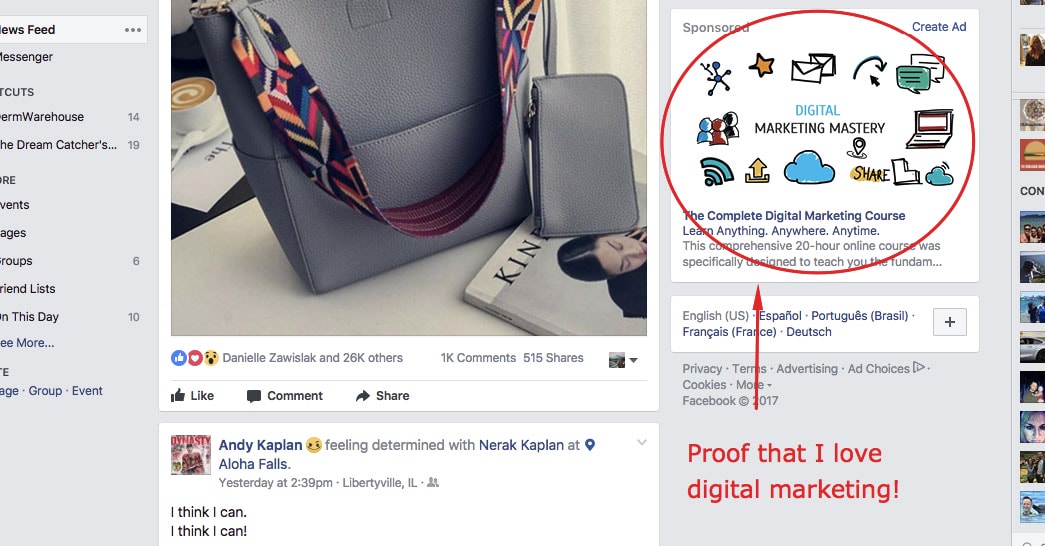
There is no better feeling than completing the development of your eCommerce website. Whether you have 5 or 5,000 products, once you launch, you suddenly realize that someone in Los Angeles, Kansas or Manhattan, New York can purchase your products with the click of a mouse.
Business owners, marketers, and entrepreneurs who launch an eCommerce website need to have the mentality of a bestselling author. If John Grisham wrote the greatest book in the world but let it collect dust on his nightstand, he would not be a household name. Grisham was a master at distribution, which helped him find publishers and distributors to get his novels into bookstores and online outlets.
Launching your website is actually the easy part of the journey. The true fun begins once you have to become a marketing guru in order to get people to your eCommerce website.
Read on to learn from our guest expert about the top advertising solutions for eCommerce store owners.
Step 1- Create a Google Shopping Feed
If you have conducted a Google search for “Nike Tennis Shoes” and see images populate at the top of the search results, those are Google Shopping Ads.
According to Google, a shopping ad is a type of an ad that features detailed information about specific products that you sell. Shopping ads can refer to Product Shopping ads, which feature just one product, or Showcase Shopping ads, which feature several related products.
Google Shopping Ads pull the title of your product along with keywords referenced throughout the product page on your site to generate a relevant search query for the user. Shopping Ads also pull in the image of the product, which is how the photo is generated on Google’s search.
This form of advertising is relatively cheap and is a great way to drive instant traffic to your website. In the example below, you can see that for the skincare brand ClarityRx, DermWarehouse is populating for numerous products. On average, this is costing us $0.80 per click. Utilizing these shopping ads has really helped generate awareness for this brand on the site. Plus, since there is limited competition for many of these products, this made them become some of our top sellers in a short time span, all thanks to Google Shopping.

HERE is a video you can watch on how to create a Google Merchant Center Feed. It is relatively simple. Within Google Sheets, you follow the format outlined by Google. You organize your feed based off of certain columns that contain product information and then you upload this feed to your Google Merchant Center. Once your Merchant Center is synced with your Google Adwords account, your products will start to populate on Google search!
Bing also has a shopping feed and follows a similar format to Google. According to a study conducted by Search Engine Watch, it was 63% cheaper to generate a conversion on Bing vs. Google. Don’t discount the second most popular search network!
Step 2 - Sell Your Products on Amazon
According to The Motley Fool, FBA (Fulfillment By Amazon) increased 80% last year in the United States. Amazon is exploding in terms of popularity as consumers are getting more comfortable making Amazon their go-to destination for online shopping.
Nike confirmed recently that it will sell its products directly to Amazon. It isn’t just mom and pop shops that are listing products on Amazon anymore. When a major player like Nike makes the transition to this eCommerce channel, it is time for your eCommerce business to do the same.
If you don’t have an Amazon marketing strategy, you are behind the eight ball. You need to spend the time to get all of your products listed on Amazon so consumers can find your products on this popular marketplace.
According to Quora, Amazon ships an average of 608 million packages each year, which equates to (an estimated) 1,600,000 packages a day. That's a lot of cardboard boxes!
We have clients that are doing millions of dollars per year in Amazon sales. The amazing thing about their Amazon success is that they don’t have to spend a dollar on advertising, it has all happened organically!
Keep in mind that Amazon takes a fee based off of your sales so make sure your products are priced accordingly. I stumbled upon this great article “Twenty Amazon Selling Tips” which will walk you through the process of becoming an Amazon pro.
Step 3 - Invest in SEO
Technically, SEO isn’t a form of advertising. You can’t pay to get top placement. I’m still including search engine optimization in this list since it can be one of the most profitable return on investments for your marketing efforts.
In step number one, I referenced Google Shopping, where you can bid to get your advertisement ranked in a high position.
How exactly is Google determining which business populates in the organic search results? There is a lot of correlation between the domain authority of your website and the SEO results.
If you are unfamiliar with domain authority, it is a score (on a 100-point scale) developed by Moz that predicts how well a website will rank on search engines. To increase domain authority, you need quality backlinks pointing back to your site from external websites.
How exactly do you acquire backlinks for your website? You deploy a public relations strategy. Your goal should be to get other websites to reference and link back to your website. The foundation of Google’s algorithm is predicated off of backlinks so the more quality brand references you receive, the better.
The beauty of SEO is that if you receive top placement on Google, you don’t have to pay each time someone clicks to your website. This placement is “earned,” which is why there are such great profit margins for SEO. The challenge is dedicating the time to achieving page one rank.
Step 4 - Retargeting Advertising
Have you ever visited a website, like Nordstrom, seeking a pair of jeans and then when you login to Facebook, that same pair of jeans magically appears on your newsfeed? This is called retargeting and it is one of the most profitable returns on investments from an online advertising standpoint.
This process is fairly simple. You place a pixel on the backend of your website. You don’t need development skills to pull this off but if you want to contact a developer, it shouldn’t take him or her more than 15 minutes to complete for you.
Once the pixel is added to the backend of your site, you’ll have a graphic designer create a branded advertisement for your company so people will remember you once they drop off of your site. Remember, the standard eCommerce conversion rate in the U.S., according to SmartInsights.com is 3.24%. This means that nearly 96 out of 100 people will drop off of your website WITHOUT taking action. This is why it is so important to have retargeting advertisements in place.
Your ads will appear on Facebook and popular sites like CNN. While people might think you are spending lots of money to populate on well-known sites, it is cheap, averaging in many instances around $0.70 -$1.00 per click.

If you own an eCommerce store, display retargeting advertisements are a must.
Step 5 - Social Media Advertisements
Everyone thinks social media is a must for eCommerce store owners. While I don’t disagree with this notion, I think there is too much emphasis on posting onto Instagram and Facebook without measuring the return on investment along with your time investment from these channels.
Make sure you set-up Facebook advertisements that target your demographics. This is what social media is great for. If you sell hockey equipment online, you can target hockey players through social media, which can yield a solid ROI if the campaign is set-up properly.

There are many social networks to tackle depending on your niche, such as Etsy and Pinterest for more craft oriented projects.
Social media definitely needs to be a part of your online marketing mix. Don’t put all of your eggs into one basket though. Diversify through the five aforementioned steps and you’ll start generating more traffic and sales.
This article was prepared by Jason Parks, the President of The Media Captain marketing agency, and a co-founder of DermWarehouse, an eCommerce skincare and beauty website. Jason has been featured in the New York Times, The Huffington Post, Inc., Yahoo News, Search Engine Watch, The Columbus Dispatch and Entrepreneur.com. Jason has assisted in launching successful digital campaigns for Fortune 100 and Fortune 500 companies to medium and small sized businesses.
Comments